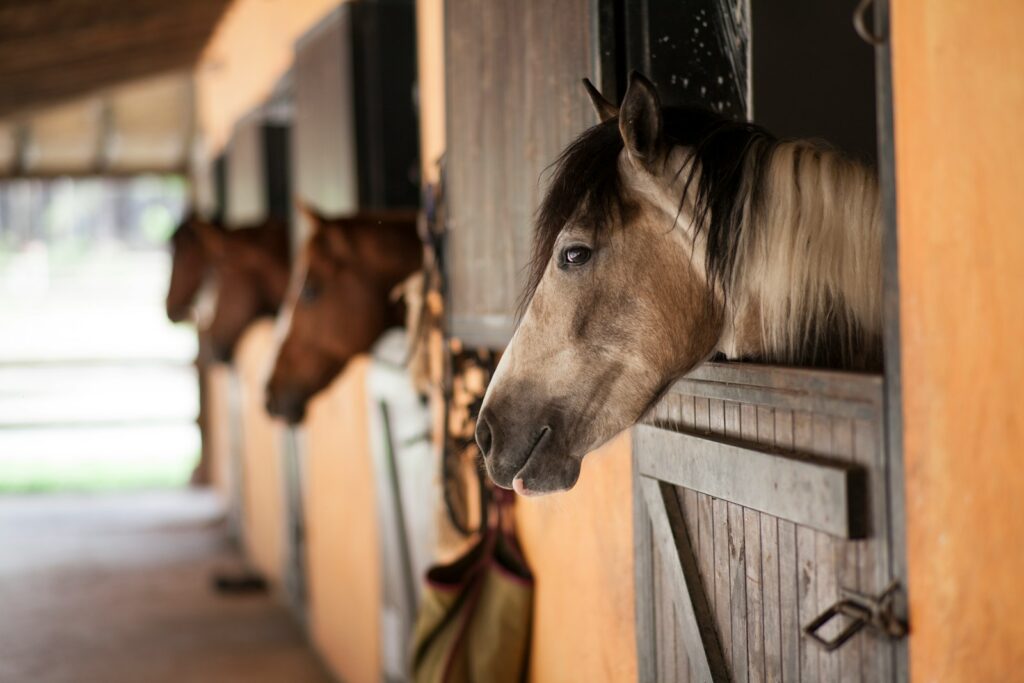Horses are magnificent animals that require special care and attention, especially when it comes to their living environment. A barn should serve as a safe haven for horses, not a place filled with potential dangers. Unfortunately, many horse owners overlook common hazards that can lead to serious injuries or even fatalities. Creating a safe barn environment requires diligence, awareness, and regular maintenance. By understanding potential risks and implementing preventative measures, you can significantly reduce the likelihood of accidents and ensure your equine companions remain healthy and protected. This comprehensive guide explores the most common barn hazards and provides practical solutions to keep your horses safe.
Understanding the Importance of Barn Safety
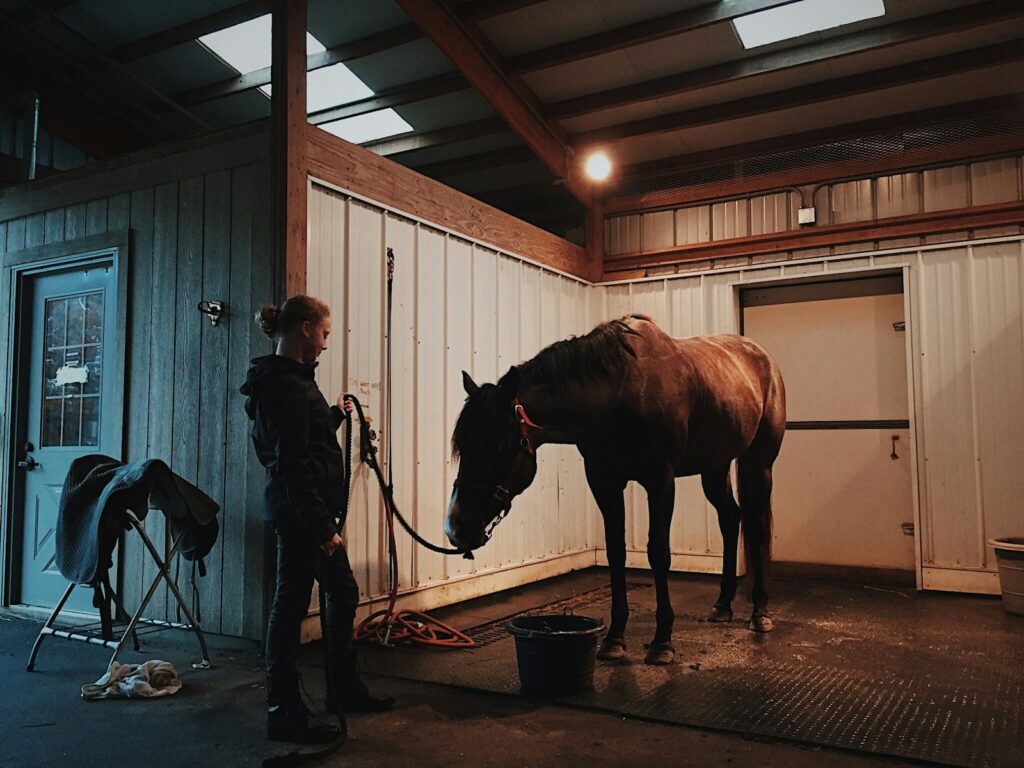
Barn safety is not merely a convenience but a critical aspect of responsible horse ownership that directly impacts the well-being of your equine companions. Horses are naturally curious and sometimes impulsive animals, which can lead them into dangerous situations even in seemingly safe environments. Statistics from equine insurance companies suggest that a significant percentage of horse injuries and fatalities occur within the barn or immediate surroundings rather than during riding or training. The economic impact of these incidents extends beyond veterinary bills to include potential loss of use, breeding capabilities, or competition eligibility. Implementing comprehensive safety measures protects not only your valuable investment but also honors the trust these sensitive animals place in their human caretakers.
Fire Prevention and Emergency Planning
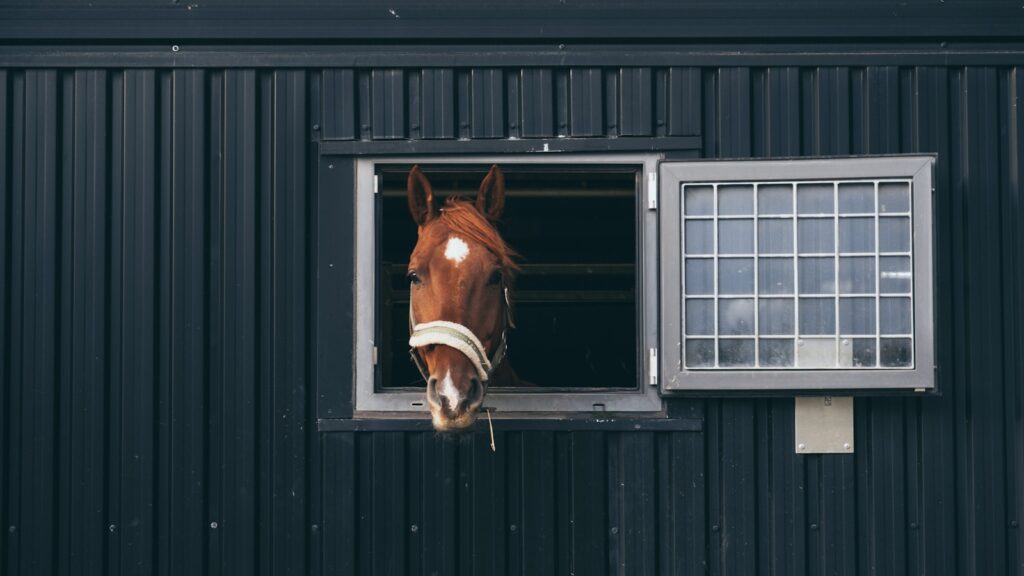
Fire represents one of the most devastating hazards in a barn setting, capable of spreading rapidly through hay, bedding, and wooden structures. Install smoke detectors and fire extinguishers throughout the barn, ensuring they’re regularly inspected and maintained according to manufacturer recommendations. Store hay and bedding away from electrical fixtures, and consider a separate storage building for these highly combustible materials if possible. Develop and practice an emergency evacuation plan that includes multiple exit routes and designated safe areas for horses once evacuated. Post emergency contact information prominently, including veterinarians, fire department, and all barn staff, and consider installing a sprinkler system for additional protection in larger facilities.
Electrical Safety Measures
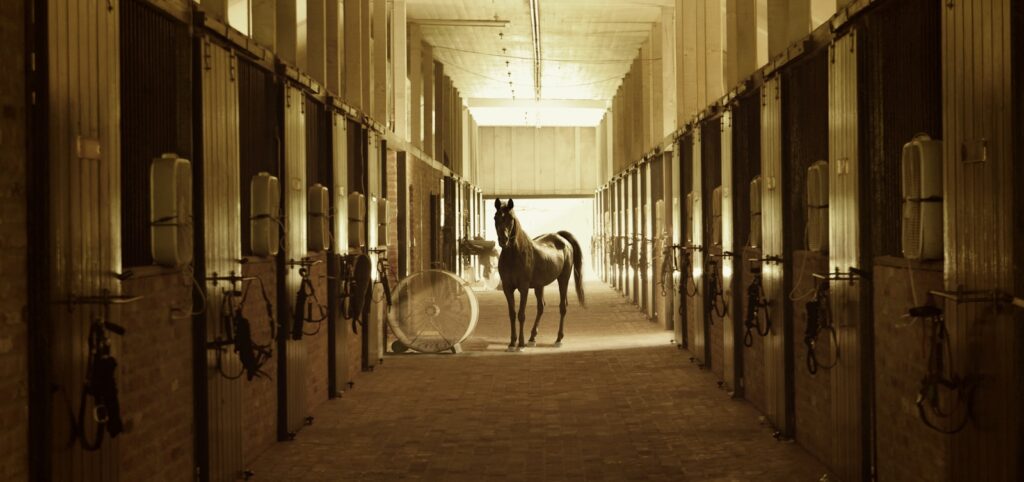
Electrical issues rank among the leading causes of barn fires and pose significant safety risks in the humid, dusty environment of a horse stable. All electrical work should be performed by certified professionals familiar with agricultural building requirements, using materials rated for damp locations and protected with appropriate conduit. Install Ground Fault Circuit Interrupters (GFCIs) on all outlets to prevent electrical shocks, particularly in wash stalls and areas where water is commonly used. Keep electrical components like switches, outlets, and junction boxes out of reach of curious horses, preferably at least eight feet high or behind protective covers. Conduct regular inspections for signs of rodent damage to wiring, as these pests frequently chew through insulation creating dangerous fire hazards that may go unnoticed until catastrophic failure occurs.
Structural Integrity and Maintenance
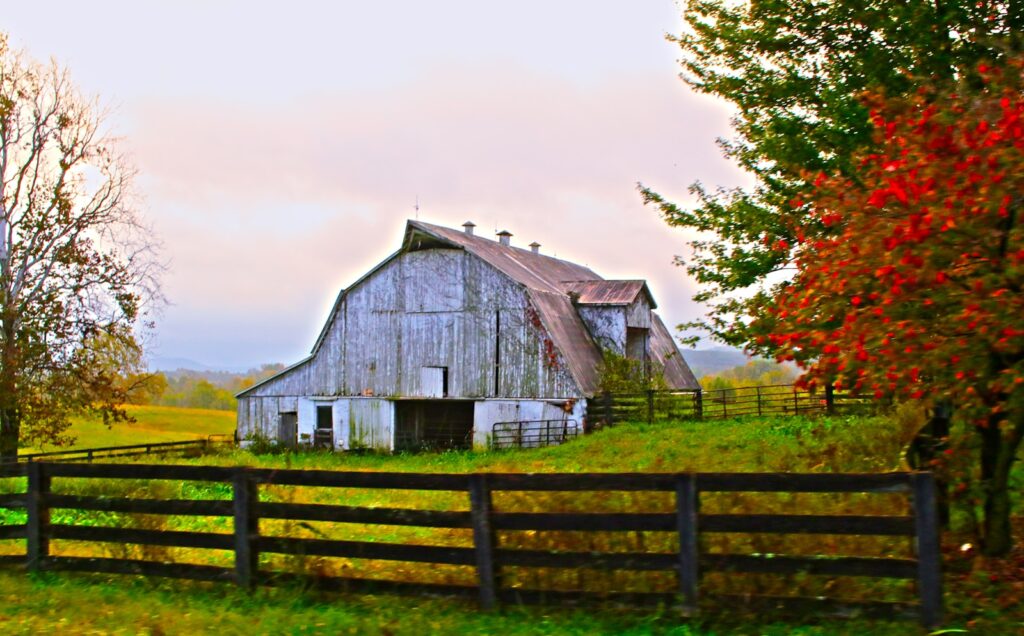
Regular inspection and maintenance of your barn’s structural elements are essential for preventing accidents and ensuring longevity of the facility. Check support beams, rafters, and foundation elements for signs of rot, termite damage, or structural fatigue that could compromise the building’s integrity. Repair loose boards, protruding nails, and splintered wood immediately, as these can cause serious lacerations or puncture wounds to horses. Ensure stall doors operate smoothly without sticking or swinging freely, which could trap or strike a horse during movement. Examine flooring regularly for uneven surfaces, holes, or deterioration that might cause trips or falls, particularly in high-traffic areas where horses enter and exit the barn.
Proper Stall Design for Horse Safety
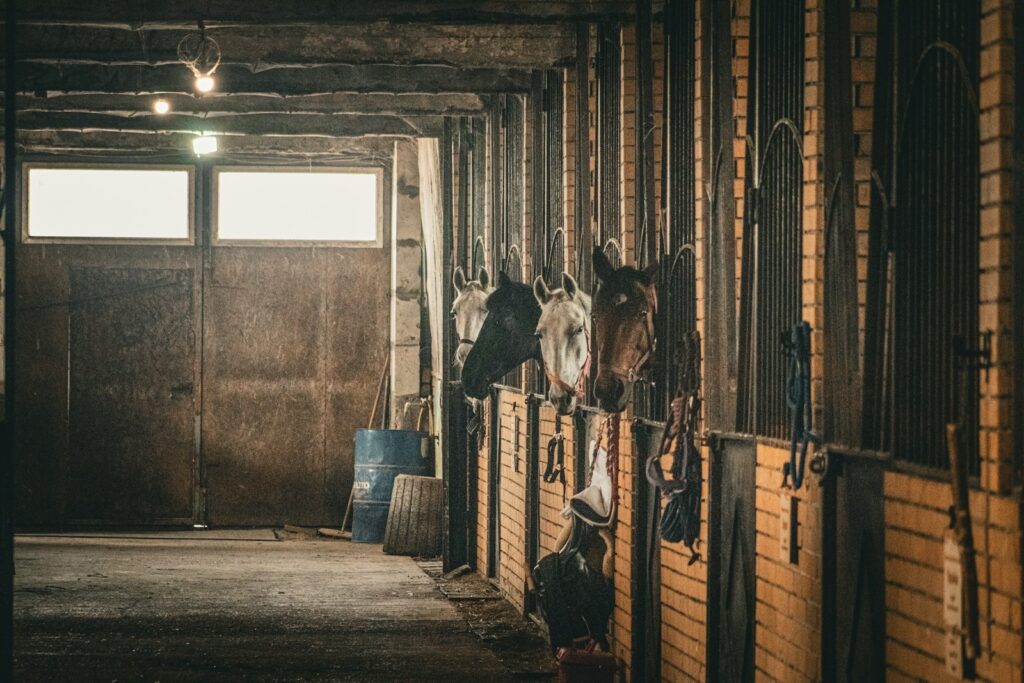
Thoughtful stall design significantly impacts horse safety and comfort, with several critical elements requiring attention. Stall size should accommodate your largest horse, allowing them to turn around comfortably, lie down, and rise without restriction—generally 12×12 feet for average horses and larger for draft breeds. Walls should extend high enough to prevent horses from getting legs caught if they rear up, with smooth surfaces free from protrusions, hooks, or ledges that could cause injury. Choose appropriate door latches that horses cannot manipulate but that humans can quickly release in an emergency, avoiding sliding doors that horses might trap themselves against. Install proper ventilation systems that provide fresh air without creating drafts, as respiratory issues from poor air quality remain one of the most common health problems in stabled horses.
Eliminating Toxic Substances and Plants
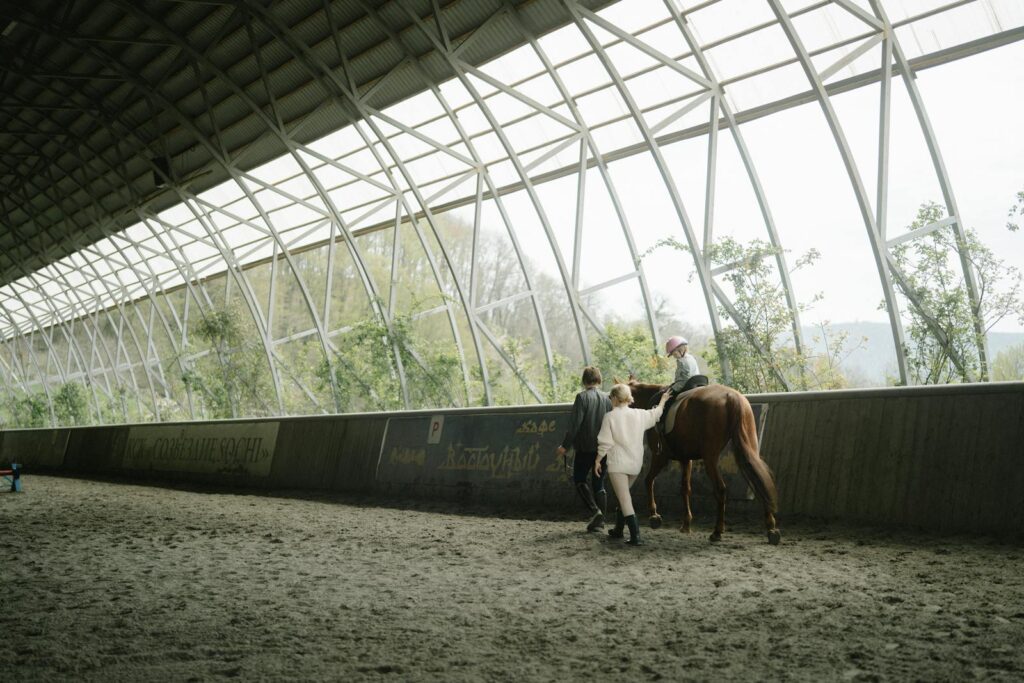
Barns often contain numerous substances potentially harmful to horses, requiring vigilant management to prevent accidental ingestion. Store all cleaning products, pesticides, herbicides, and medications in locked cabinets well out of reach of curious equines who might chew on containers. Carefully inspect pastures and paddocks for toxic plants such as foxglove, yew, red maple, black walnut, and oleander, removing them completely including roots to prevent regrowth. Be cautious with treated lumber, particularly older pressure-treated wood containing arsenic compounds, which horses may chew, especially when bored. Create a detailed list of poisonous substances and plants with symptoms of toxicity and emergency procedures, posting it prominently for all barn users to reference in case of suspected poisoning.
Feed Storage and Management
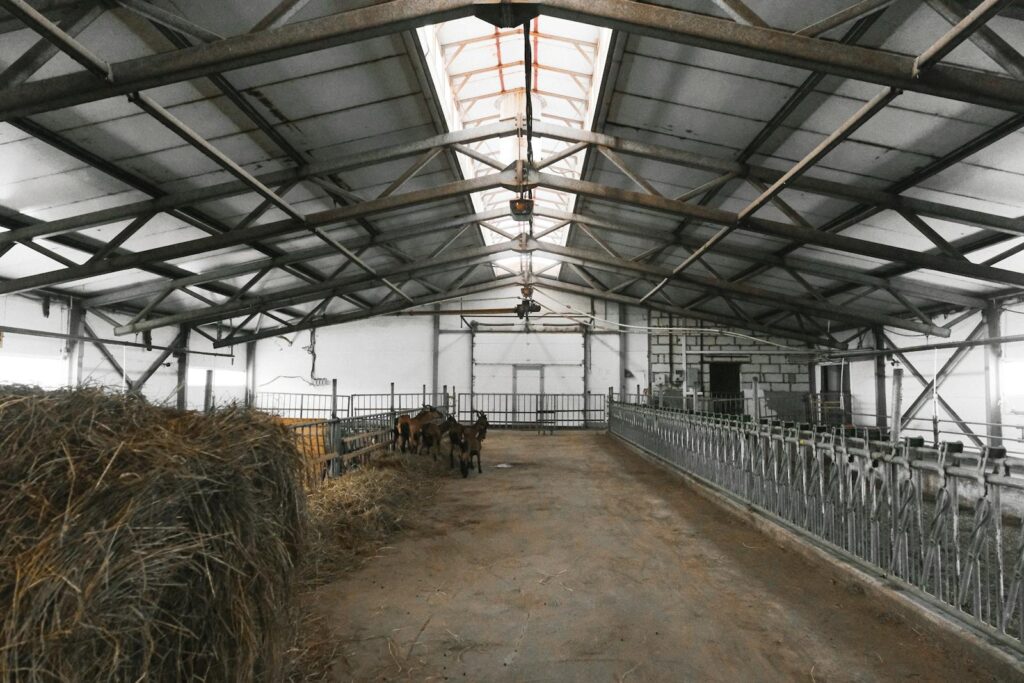
Proper feed storage protects both the nutritional integrity of the feed and prevents potential health hazards for horses. Store grain in tightly sealed containers that prevent access by rodents and keep feed dry to prevent the growth of harmful molds and fungi that can cause serious digestive or neurological problems. Clearly label all feed containers, especially when multiple types of grain or supplements are used for different horses, to prevent feeding errors that could lead to colic or laminitis. Establish a systematic feeding protocol that all caregivers follow consistently, documenting any changes in appetite or behavior that might indicate health issues. Secure feed rooms with appropriate latches that horses cannot open if they escape their stalls, as unrestricted access to grain can lead to potentially fatal conditions like grain overload.
Safe Handling of Equipment and Tools
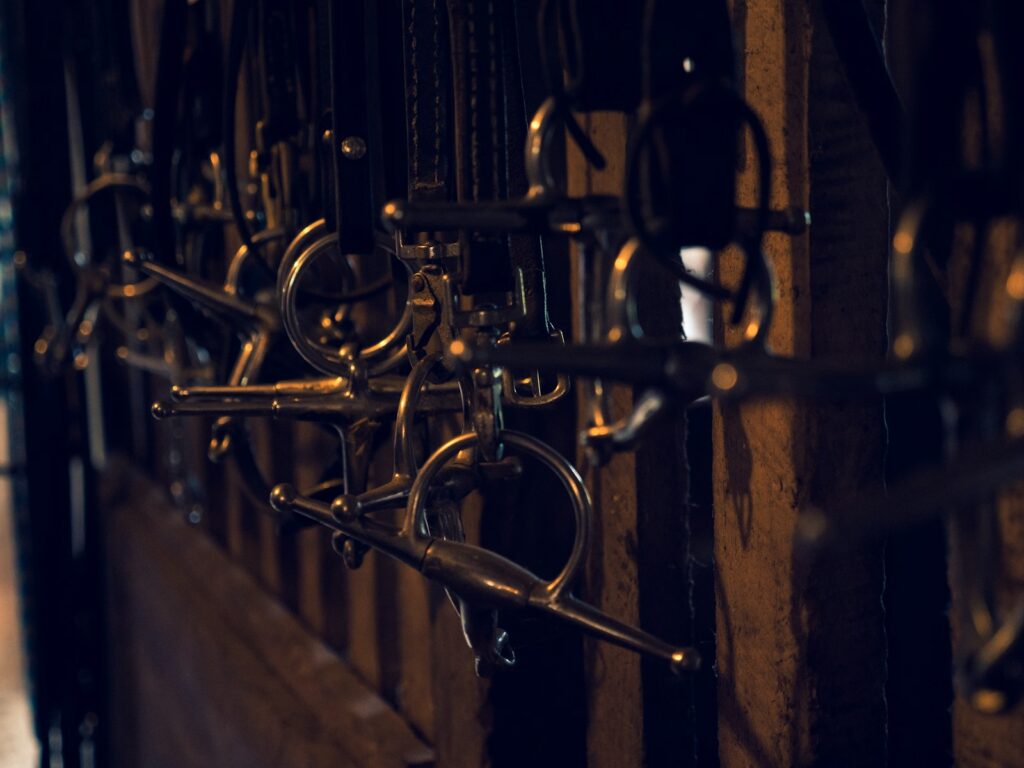
Barn tools and equipment present numerous hazards when improperly stored or carelessly handled around horses. Designate specific storage areas for pitchforks, shovels, brooms, and other equipment, using wall-mounted racks that keep these items secure and prevent them from falling. Ensure wheelbarrows and carts are stored upside down or in positions where horses cannot step into them and potentially injure themselves. Maintain all equipment in good working order, replacing broken handles and repairing damaged parts that might splinter or break during use. Create clear protocols for equipment use and storage that all barn users must follow, emphasizing that even temporarily placed tools can create dangerous situations if horses become startled or move unexpectedly.
Proper Lighting for Visibility and Safety
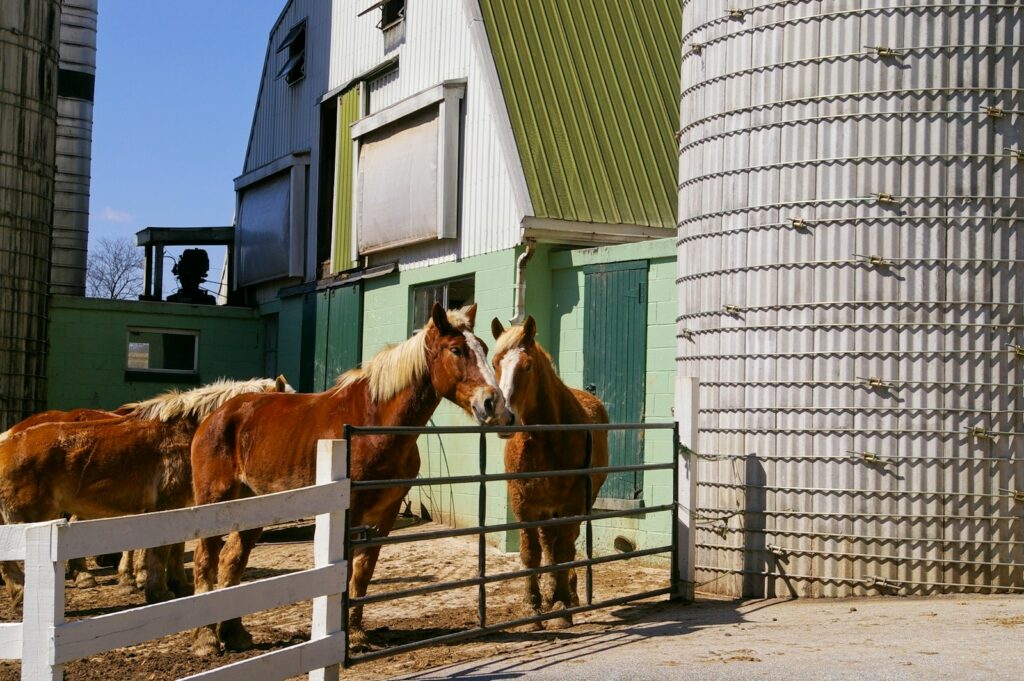
Adequate lighting significantly reduces accident risk in barns by ensuring clear visibility of potential hazards and horse behavior. Install sufficient overhead lighting in aisles, stalls, and work areas that eliminates shadows and dark corners where horses might spook or handlers might miss important visual cues. Consider motion-activated lights for nighttime security and convenience during late checks, ensuring paths to and from the barn are well-illuminated. Include emergency lighting systems that activate during power outages, particularly important in windowless barns where sudden darkness could cause panic. Position light switches logically near entrances and exits, making them easily accessible without requiring handlers to release horses or navigate in darkness.
Pest Control and Biosecurity Measures
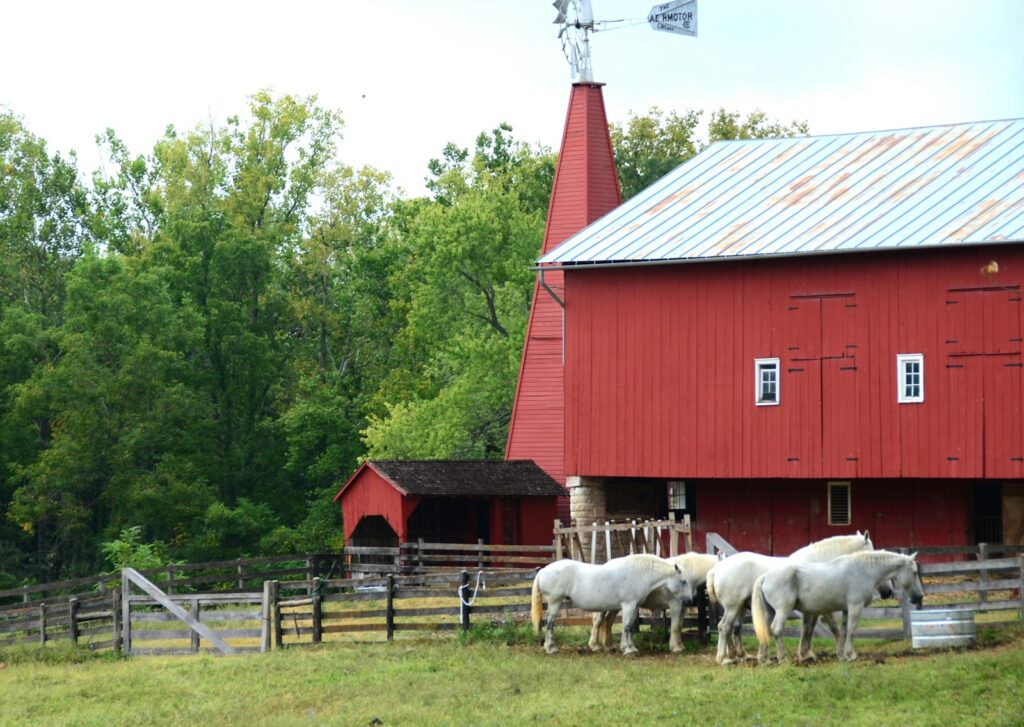
Comprehensive pest management protects both barn infrastructure and horse health from various threats posed by unwanted intruders. Implement integrated pest management strategies that combine structural modifications, habitat reduction, and carefully selected control methods appropriate for use around livestock. Regularly inspect and seal potential entry points for rodents, birds, and insects, which can damage feed, spread disease, and create fire hazards through wiring damage. Establish quarantine protocols for new horses entering the facility, including isolated stabling and health screening to prevent the introduction of contagious diseases. Maintain a regular schedule for manure removal and proper composting away from the barn, eliminating breeding grounds for flies and reducing the attraction for other pests.
Aisle Safety and Traffic Management
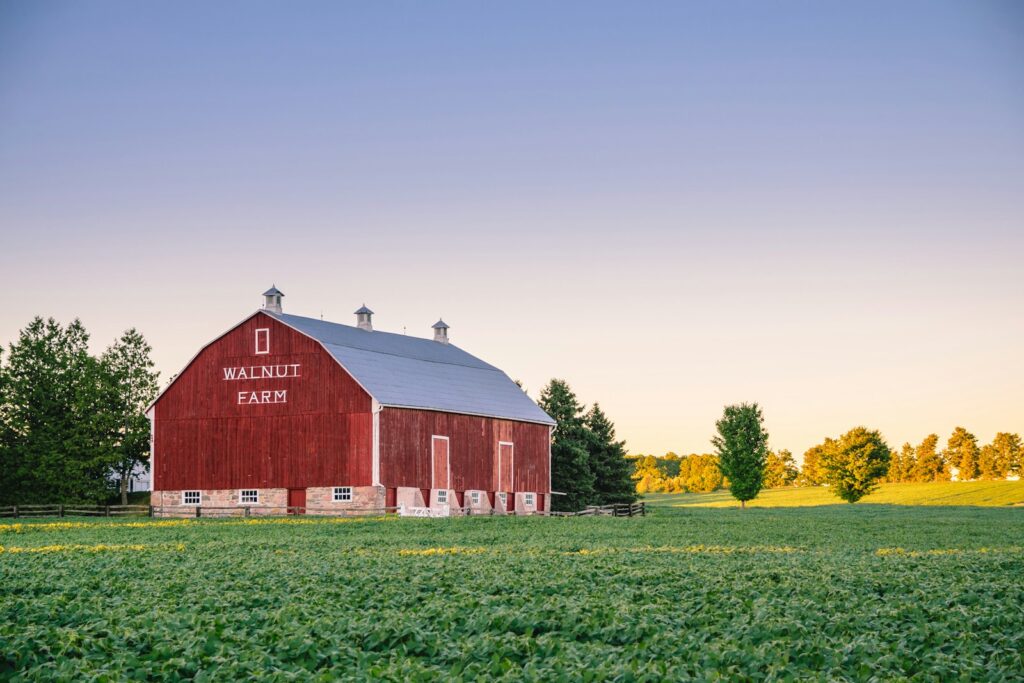
Barn aisles serve as major thoroughfares for both humans and horses, making their design and maintenance critical safety considerations. Maintain wide, unobstructed aisles of at least 12 feet to allow horses to pass safely without feeling confined, which can trigger flight responses in nervous animals. Establish clear rules about appropriate activities in aisles, prohibiting grooming, tacking, or extended tying in these shared spaces where other horses must pass. Use non-slip flooring materials that provide secure footing even when wet, such as textured concrete, rubber pavers, or specialized barn flooring products. Install appropriate lighting that eliminates shadows and blind spots, particularly at entrances and intersections where horses and handlers might not see each other approaching.
Water System Safety and Maintenance

Reliable access to clean water remains fundamental to horse health, making water system safety a priority in barn management. Install automatic waterers with protective covers that prevent horses from injuring themselves on mechanisms while ensuring regular inspection for proper function and cleanliness. For bucket watering systems, use only heavy-duty fixtures designed specifically for horses, mounted at appropriate heights that discourage playing or pawing. Protect all water pipes from freezing during cold weather with appropriate insulation and heating elements where necessary, as disruptions to water supply can quickly lead to dehydration and impaction colic. Implement a water testing program to regularly check for bacterial contamination, chemical imbalances, or other issues that might affect palatability or safety of drinking water.
Creating a Safety-Conscious Barn Culture
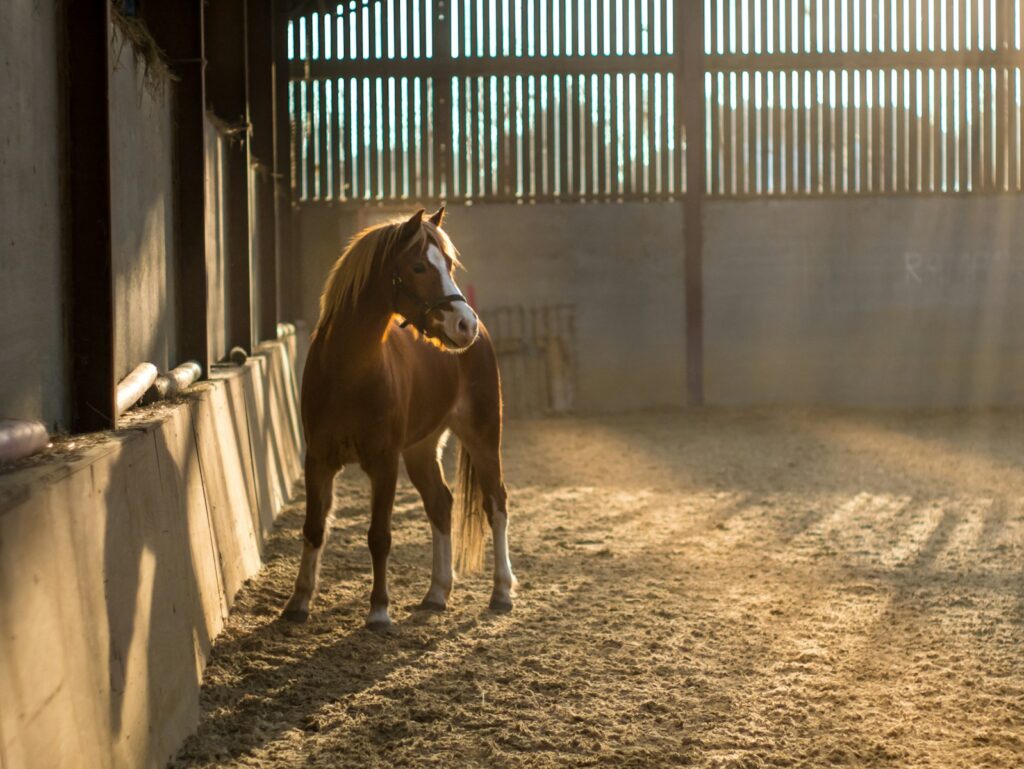
Beyond physical modifications, establishing a culture of safety awareness fundamentally transforms how everyone interacts with the barn environment. Develop clear, written safety protocols covering all aspects of barn management and horse handling, making these documents accessible to everyone who enters the facility. Conduct regular safety briefings and training sessions for staff, boarders, and visitors, emphasizing personal responsibility for maintaining safe conditions. Encourage open communication about potential hazards or near-miss incidents without blame, creating an atmosphere where safety concerns can be raised without fear of criticism. Perform scheduled safety audits using a comprehensive checklist that examines all aspects of the facility, documenting findings and establishing timelines for addressing any issues identified.
Emergency Response Planning
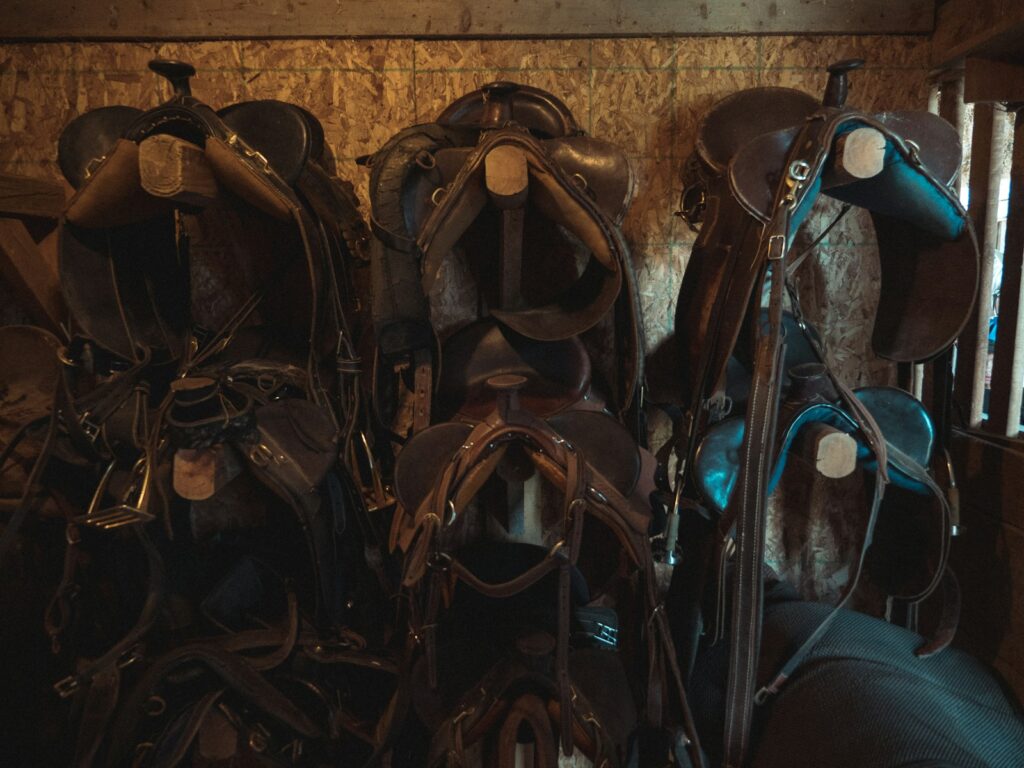
Even with rigorous prevention measures, emergencies can still occur, making prepared response planning essential for minimizing harm. Create detailed emergency protocols for various scenarios including fire, severe weather, medical emergencies, and escaped horses, posting these plans prominently throughout the facility. Assemble emergency supply kits strategically located for quick access, containing first aid supplies, halters, lead ropes, and other equipment needed for rapid response. Establish relationships with local emergency services before crises occur, potentially arranging facility tours for fire departments so they understand barn layout and special considerations for horse evacuation. Conduct regular drills practicing various emergency scenarios, ensuring everyone understands their responsibilities and can execute the plan calmly under pressure.
Conclusion
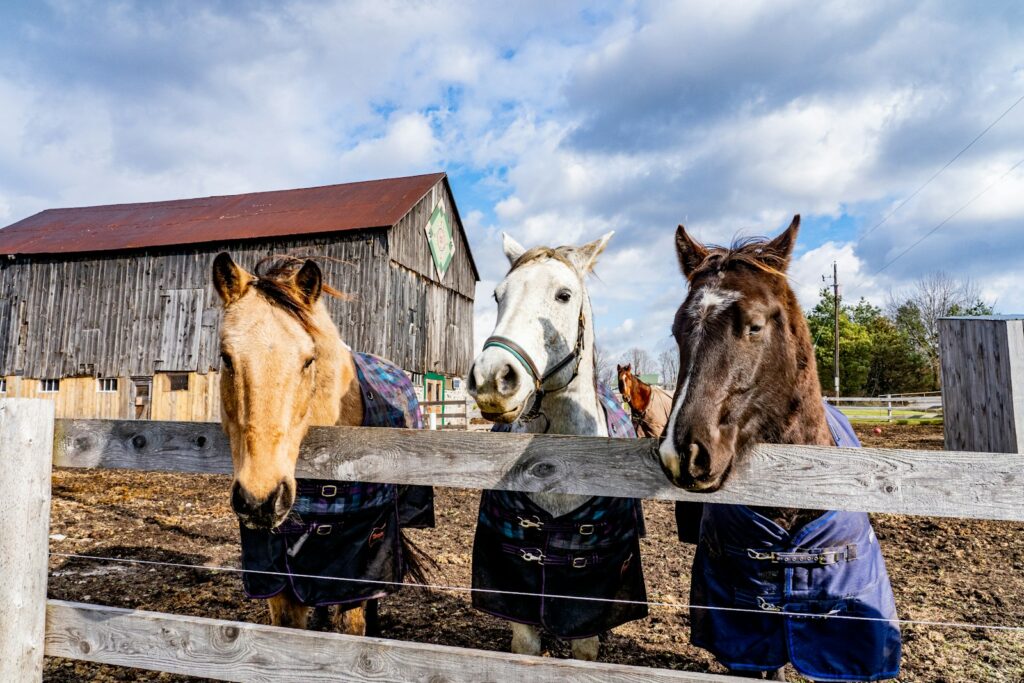
Maintaining a safe barn environment requires consistent effort, attention to detail, and a proactive approach to identifying and addressing potential hazards. By implementing the strategies outlined in this guide, horse owners and barn managers can significantly reduce the risk of accidents and injuries. Remember that safety is not a one-time effort but an ongoing commitment that evolves with your facility and the horses in your care. Regular inspections, maintenance, and safety reviews should become routine parts of your barn management system. With proper planning and vigilance, you can create a secure environment where both horses and humans can thrive, free from unnecessary risks and dangers. Your horses rely on you to protect them—make barn safety your top priority.

